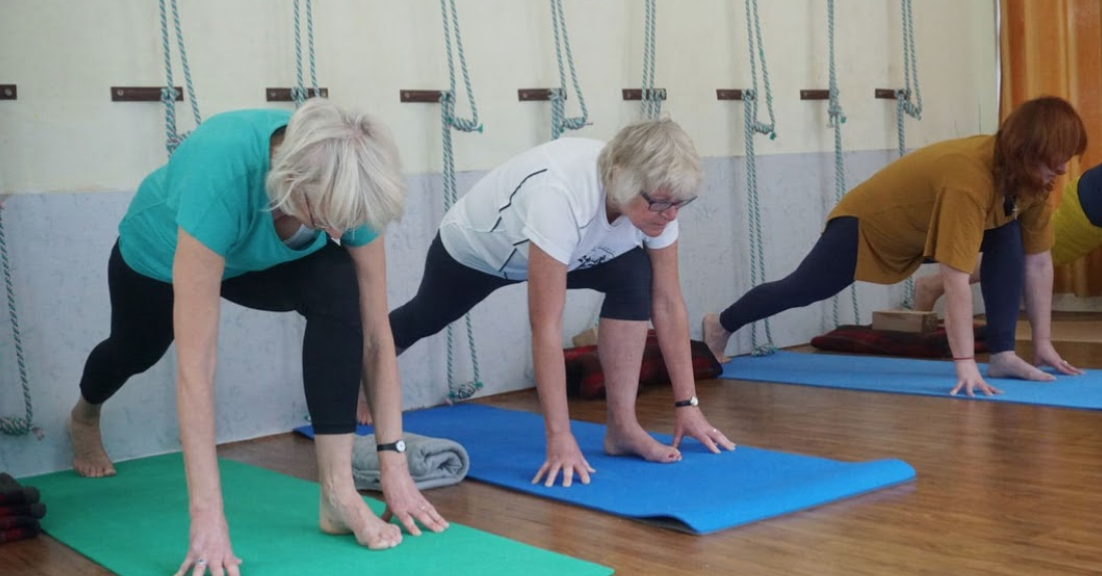Mental Health Series Part 4: Training the Brain with Practices You Can Try At Home
In Part 2 of our Mental Health and Arthritis blog series, we discussed the benefits of strengthening mental health to decrease arthritis pain and facilitate postoperative healing. You can start caring for your mental health at home with these practices!
Mindfulness
What is it?
Mindfulness is the ability or practice of maintaining a non-judgmental state of heightened awareness of one's thoughts, emotions, or experiences on a moment-to-moment basis.
Mindfulness can be characterized into five facets: Observing, Describing, Acting with Awareness, Non-Judging, and Non-Reacting.
1) Observing - the ability to attend to or notice internal and external stimuli, such as sensations, emotions, cognitions, sights, sounds, and smells.
2) Describing - noting or mentally labeling observed stimuli with words.
3) Acting-with-Awareness - attending to one's current actions, as opposed to behaving automatically or absentmindedly.
4) Non-Judging of Experience - refraining from evaluation of one's sensations, cognitions, and emotions as negative, unacceptable, or intolerable.
5) Non-Reactivity to Experience - the ability to allow thoughts and feelings to come and go, without getting caught up in or carried away by them.
Is it effective?
Yes, mindfulness practices have been proven to decrease reported pain in arthritis patients. A study from the Journal of Osteoarthritis and Cartilage examined the effect of mindfulness on the psychological health of patients with knee osteoarthritis. The findings, along with several others, showed that higher levels of mindfulness in chronic pain patients were associated with lower pain levels and better pain coping abilities.
Another study from the Journal of Health Psychology examined the relationship between acceptance and mindfulness on arthritis pain. Results showed that mindfulness and acceptance led to a lower reporting of symptoms and/or improvements in well-being.
In other words, mindfulness practice helps you strengthen your mental health, which in turn helps you cope with arthritis symptoms.
Practical applications that can help you develop these skills include:
Keep a gratitude journal
Track gratitude and achievement with a journal. Include 3 things you were grateful for and 3 things you were able to accomplish each day.
Do some coloring
Channel your creativity and color for 20 minutes to help you clear your mind. Pick a design that's geometric and a little complicated for the best effect. Check out hundreds of free printable coloring pages here.
Practice forgiveness
People who forgive have better mental health and report being more satisfied with their lives. Even if its just forgiving the person who cut you off in traffic, make forgiveness a common practice in your life.
Limit your use of technology
Set limits on your phone, especially social media. Create time to disconnect from all of the alerts and interruptions each day.
Enjoy 15 minutes of sunshine
Get outside and make sure to apply sunscreen. Sunlight synthesizes Vitamin D, which experts believe can improve your mood.
Write down what is bothering you
Writing about upsetting experiences can reduce symptoms of depression and can help you ease your mind.
Exercise
Is it effective?
Exercise has long-term effects on well-being in the general population. Lower levels of anxiety, improvements in well-being and mood have been reported by individuals who exercise regularly compared to sedentary adults.
Specifically to arthritis patients, exercise has been proven to improve arthritis pain, function, mood, and quality of life.
One study by Arthritis Research and Therapy found that exercise is associated with important reductions in depressive symptoms among selected adults with arthritis and other rheumatic conditions. The findings also suggest that exercise may improve other outcomes including physical function, pain, quality of life, and anxiety.
The American College of Sports Medicine recommends that most adults exercise 150 minutes of moderate-intensity exercise each week, or about 30 minutes, five days a week. Regular exercise has been proven to be effective in the prevention of chronic diseases such as cardiovascular disease, diabetes, cancer, depression and arthritis.
The American College of Rheumatology strongly recommends aerobic, aquatic and resistance exercises for the non‐pharmacological management of hip and knee osteoarthritis. Unfortunately, the prevalence of exercise in adults with arthritis is low. One study by the American Journal of Preventive Medicine found the percentage of adults with arthritis who perform moderate physical activity for at least 30 minutes per day, three days per week, has been reported to be only 37%.
It can seem intimidating to begin a regular exercise routine when living with chronic pain, but there are guidelines to ensure safe and effective routines to live an active lifestyle in spite of arthritis.
What types of exercises are safe for arthritis?
All exercise should be done with moderate intensity and low-impact to avoid hurting your joints further. You should pay close attention to your pain symptoms and if they worsen after exercise, reduce the intensity and frequency.
Walking
Walking is safe for almost everyone, even those with severe arthritis.
Yoga
Yoga combines standing, sitting, and reclined postures with breathing and meditation techniques to benefit both your mind and body.
Water Workouts
Swimming and water aerobics are great exercises to get your joints moving without impact.
Weight Lifting
The key to using weights safely is to have proper form and to lift the correct amount of weight for your strength level.
Check out our Move To Mobility video series we created with the help of Physical Therapist, Whitney Patton, on how to begin an exercise program, safe yoga exercises and weight lifting routines.
Have you tried or thought about trying any of these practices to manage your arthritis symptoms? Let us know in the comments!
--
To receive the latest blog posts from the AMD3 Foundation, subscribe to News That Moves You in the signup box below.



